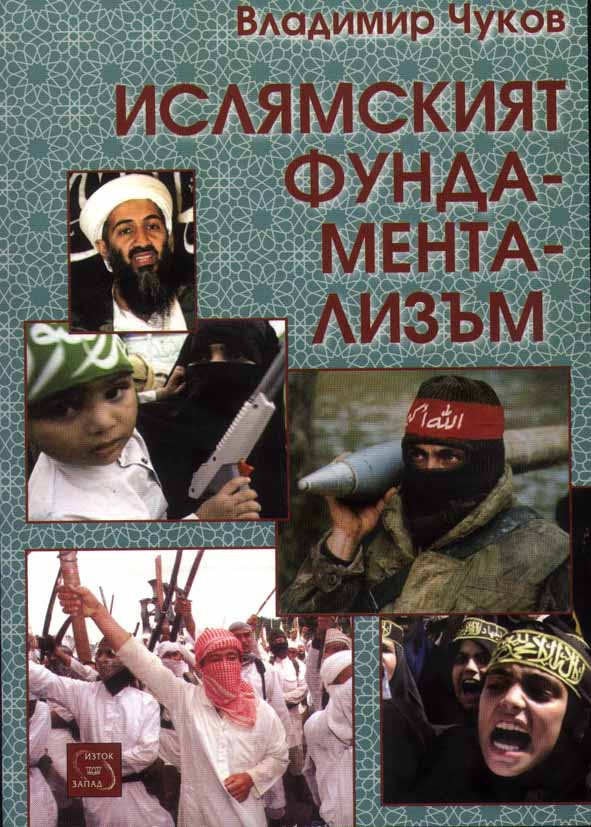
Contents
I. Foreward
II. Comparative Fundamentalism
- Etymology of Religious Fundamentalism
- Non-State Christian Fundamentalism
- The Semitic Base of Jewish Fundamentalism
- Islamic Fundamentalism as World Phenomena
III. The Background of Islamic Fundamentalism
- Social and Economic Characteristics
- Internationalization and Problematic Secularization
- Anti-americanism
- Psychological Characteristics
- The Jihad: Religious Imperative or Modus Operandi
- Suicide Assaults
- Ideological Contradictions and Tactical Discrepancies
- Personification of the Main Trends
IV. Political Parties’ Islamic Fundamentalism
- The Undisputable Flagman: Al Qaeda
- The Old War-Horse: The Muslim Brethren Movement
- “Supporting” Organizations in Egypt: Al Gamma al Islamyiia and Islamic Jihad
- The Shiite Pioneer: Hezbollah
- The “Surprising Explosion” of Hamas
- The Iranian Shadow in Palestine: Islamic Jihad
- The Algerian Fundamentalist “Poison”: The Front of Islamic Salvation, The Armed Islamic Group and The Salafite Group for Appeal and Fight
- The Iraqi Multiconfessional “Volcano” – Ansar al Islam, The Ansar as Sunna Army and The Army of Mahdi
V. State Islamic Fundamentalism
- The Islamist Instinct in Turkey
- Saudi Arabia: The Object and Subject of Fundamentalism
- Selective State Fundamentalism in Iran
VI. Conclusion
VII. Bibliography
VIII. Personal Names’ Index
IX. Summary in English
ISLAMIC FUNDAMENTALISM
From Theoretical Framework to Regional Dimensions
Vladimir Chukov
2004, 438 pp. Published by East-West, Sofia, ISBN 954-321-054-3.
Summary
Islamic fundamentalism is a matter that two generations of scholars and experts have been dealing with. It remains one of the most challenging world political doctrines stemming from religion. Unfortunately, Islamic radicals’ ideas are very dynamic and resistant within international community, especially the ummah, the Muslim community. Thus, the struggle against them becomes harder and harder both on a theoretical level and from the practical point of view.
The aim of this study is to outline the main components of the Islamic fundamentalism theoretical framework and to highlight its regional dimensions as they are seen at the outset of the 21-st century. So, the work is divided into four chapters. Chapter One represents an explicit comparative analysis of the peculiar fundamentalist elements of the world monotheistic religions: Christianity, Judaism and Islam. The main assumption relies on the unequal development of the inherent dogmatization and radicalization process of the abovementioned religions. The varied and often contradictory state visions make the three political theories running into each other. In the meantime, the bloody and in practice insoluble Arab-Israeli conflict prompted the existence of some type of Semitic religious logic and behavioral modus operandi, unlike Christian fundamentalism that triggered the fundamentalist trend as such within monotheistic knowledge itself.
Chapter Two reveals the leading characteristics of Islamic fundamentalist monolith. The study gets an insight into its social, economic and psychological elements as well as into such elucidated intricate matters as the embarrassing secularization process, the antiamerican spirit, the incomprehensible jihadist potential, the suicide bombers’ phenomena, the main doctrinal and tactical contradictions and the personification of the leading political tendencies: Salafism, Revivalism, Sufism and Shiism. For sure, the list of the theoretical strands may be extended, but their specific regional marks are an immanent condition for a complete analysis.
Chapter Three explains fundamentalist organizations, their structure and ideology based on a wealth of political party rules, programs, declarations and statements. Logically, it has been focused on the Islamic fundamentalist flagman, Al Qaeda; the old war-horse Egyptian Muslim Brethren and its supporting organizations like Al Gamaa al Islamyiia and Islamic Jihad; the Shiite Pioneer Hezbulla; the Palestinian national liberation fundamentalists from Hamas and Islamic Jihad; the multitute of Algerian radical subjects like the Front of Islamic Salvation and the Salafite Group for Appeal and Fight; as well as the Iraqi multiethnic and multiconfessional upburst portrayed by the Islamists of Ansar al Islam, the Moktada Sadr’s Army of Mehdi, etc...All those formations activities painted the multiplex “tectonic” strains of the Middle East Islamic fundamentalism on national and supranational level.
Explaining the notion of ethnic legitimacy within the political Islam remained one of the most advanced objects for study. It is to be implemented only through the spead of the Islamist trend throughout Turkey, Saudi Arabia and Iran as representatives of the long rivalry between the three leading ethnic groups within the ummah – the Turks, the Arabs and the Persians. Indeed, all of them set forth some kind of self-dependent Islamist model crowded with national characteristics, but sometimes generalized by common Islamic fundamentalist day-to-day instincts or intentional aspirations to export abroad such a kind of Islamist political pattern.
The main methodologic approach of the study is the comparative analysis that intertwined both chronological and case study manner in delving into the sophisticated empirical material.
